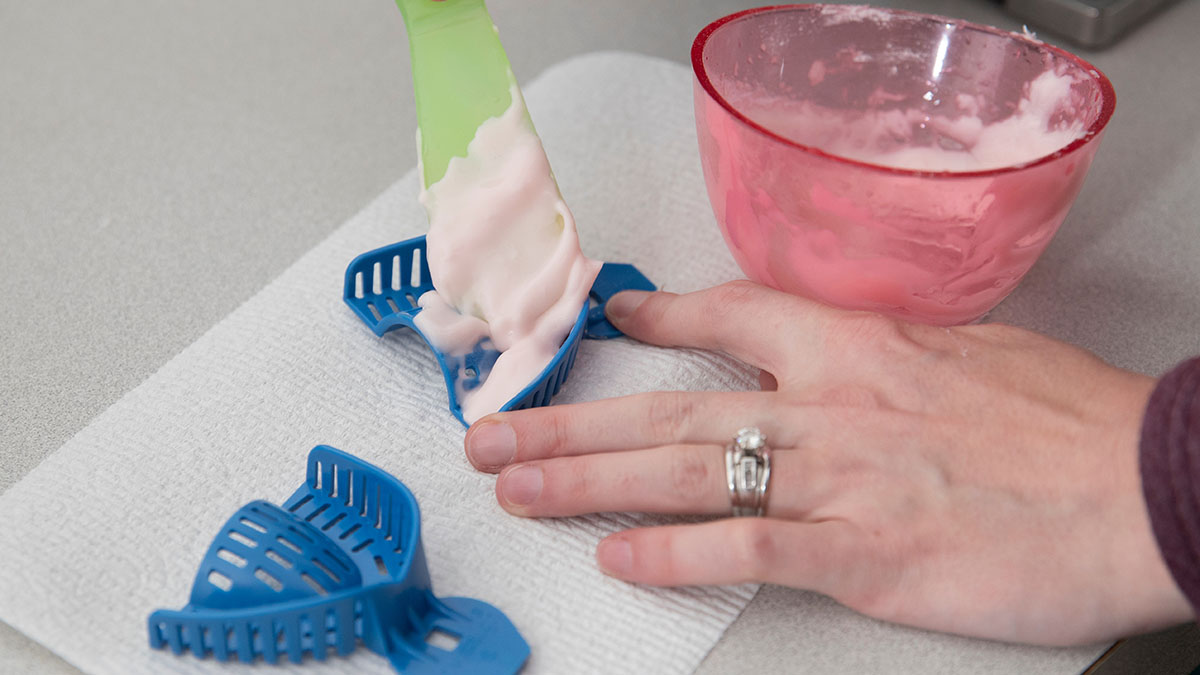Lockenvitz creates a mold to form a SmartPalate.
Faculty and graduate students assist clients at Speech, Language and Hearing Clinic.
“No one says, ‘I love having a lisp,’” Dr. Sarah Lockenvitz said.
A lisp is common in preschoolers and often recurs when a child loses teeth. In some cases, speech therapy can treat a lisp, but not always.
Lockenvitz, assistant professor of speech-language pathology at Missouri State University, studies the life experiences of those with a persistent lisp.
“Something as minor as a childhood scar, acne or body odor can affect your self-confidence. A lisp can, too,” she said.
One way Lockenvitz is restoring confidence in this population is through a collaboration with Dr. Alana Kozlowski, associate professor of communication sciences and disorders at MSU. They are working on a project to retrain lisping tongues using biofeedback.
Graduate students in the MSU Speech, Language and Hearing Clinic take molds of the mouths of adults who have a persistent lisp to design a palate. The palate, with sensors inlaid throughout, can be placed in the roof of the mouth. Once connected with the software, it can show the contact points between the tongue and palate.
“The clients have a visual to show them where the tongue should be to make the sound correctly,” Lockenvitz said.
The technology has been used in the field for many years. However, Lockenvitz and Kozlowski are using it in an innovative way. They are varying the “type and amount of feedback the clinician offers to a client based on the sounds made at that very moment,” explained Lockenvitz, “to work toward independence and consistent accuracy.”
About the Speech, Language and Hearing Clinic
This free clinic on the MSU campus evaluates and treats clients throughout the lifespan in all areas of speech-language pathology, audiology and early intervention for children who are deaf or hard of hearing.













Elon Musk Says Bill Gates has a $500 million short position in Tesla